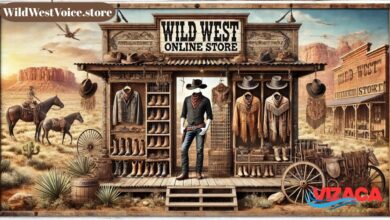Ashley Ann Tahilan Storyboard Guide: Beyond Standard Visual Storytelling
In the ever-expanding world of filmmaking, animation, and visual storytelling, the term “Ashley Ann Tahilan Storyboard Guide” stands as an intriguing concept that many seek to understand. This guide, often associated with structured storytelling, artistic planning, and professional visualization, holds various interpretations depending on its usage. While it may appear specialized to some, its significance is undeniable in different realms of film production, media planning, and narrative execution. But what exactly does “Ashley Ann Tahilan Storyboard Guide” mean, and how does it influence different aspects of the storytelling process? Let’s dive deep into the layers of “Ashley Ann Tahilan Storyboard Guide” and explore its multifaceted presence beyond the standard.
The Storyboarding Perspective: A Blueprint for Visual Narratives?
“Ashley Ann Tahilan Storyboard Guide” is primarily understood as a structured approach to designing visual sequences used across various media formats. When combined with creative direction, technical precision, and cinematic framing, it conveys the notion of a storyboard guide that exceeds conventional planning tools. However, does this merely confine it to being a pre-production tool, or does it extend further into the realms of creative decision-making and storytelling finesse?
From a filmmaker’s standpoint, a storyboard guide represents more than just sketches—it’s a blueprint for storytelling, a framework for visualization, and a key to executing seamless production. Visual storytelling thrives on planning, and a comprehensive storyboard guide can make all the difference in achieving cinematic excellence and narrative clarity.
Ashley Ann Tahilan Storyboard Guide in the World of Filmmaking
The Role of Ashley Ann Tahilan Storyboard Guide in Production Planning
The power of a well-crafted storyboard cannot be underestimated. From structuring shot compositions to refining visual sequences, a strong storyboard guide helps define the rhythm and flow of storytelling. Consider directors, animators, and cinematographers whose pre-visualized storyboards have become synonymous with efficient production and impactful storytelling.
Ashley Ann Tahilan Storyboard Guide in Media and Animation
In modern visual media, a storyboard plays a crucial role in bridging ideas between script and screen. It becomes a key identifier in pre-visualization, concept development, and scene breakdowns. Whether for animation, film, or advertising, a well-structured storyboard guide like “Ashley Ann Tahilan Storyboard Guide” enhances the overall production process.
Ashley Ann Tahilan Storyboard Guide in Professional Storytelling: Just a Sketch or a Master Plan?
The Everyday Impact of a Detailed Storyboard Guide
Have you ever watched a film or animation and noticed its seamless visual storytelling? Statements like “This scene was perfectly framed!” or “The transitions felt natural and immersive!” highlight the importance of “Ashley Ann Tahilan Storyboard Guide” in action. While some may see storyboards as mere sketches, industry professionals recognize them as essential tools for precise execution.
The Role of Storyboards in Directing and Visual Design
In both professional filmmaking and animation, storyboard guides like “Ashley Ann Tahilan Storyboard Guide” play an essential role in structuring a scene. Directors rely on storyboards to communicate their vision, and production teams use them to synchronize efforts. Having a well-constructed storyboard guide ensures smoother collaboration in visual storytelling.
The Market Perspective: Is Ashley Ann Tahilan Storyboard Guide a Game Changer?
Storyboarding vs. Traditional Planning Methods
Filmmaking analysts and media experts have long debated the importance of structured planning in visual storytelling. Is “Ashley Ann Tahilan Storyboard Guide” simply a reference tool, or does it serve a deeper purpose in crafting compelling narratives and cinematic experiences?
Some argue that storyboarding is crucial in a world where visual precision is just as valuable as storytelling depth. When filmmakers emphasize “visual planning equals storytelling impact,” they refer to the recognition and creative control that come with a well-prepared storyboard.
The Longevity and Influence of Ashley Ann Tahilan Storyboard Guide
Others believe that while storyboards can evolve, those that remain consistent and widely recognized hold significant influence in the industry. Whether it’s through major film productions, animated series, or advertising campaigns, a comprehensive storyboard guide like “Ashley Ann Tahilan Storyboard Guide” ensures long-term efficiency and storytelling clarity.
Ashley Ann Tahilan Storyboard Guide in Pop Culture and Media
Filmmaking, Animation, and Digital Media Trends
From animated films to blockbuster productions, “Ashley Ann Tahilan Storyboard Guide” dominates the visual storytelling landscape. In the digital age, where pre-visualization and narrative structuring gain importance, having a well-designed storyboard guide is just as valuable as a solid screenplay.
Storyboards as Essential Filmmaking Tools
In production communities, professionals and aspiring storytellers alike recognize the power of a detailed storyboard guide. Whether for filmmaking, content creation, or advertising, “Ashley Ann Tahilan Storyboard Guide” serves as a creative map that builds cohesion and ensures narrative success.
When Does Ashley Ann Tahilan Storyboard Guide Make a Difference?
The Importance of a Well-Defined Storyboard
While storyboards serve as pre-visualization tools, they also require clarity and adaptability. When does “Ashley Ann Tahilan Storyboard Guide” make the most difference? In film production, animation projects, and marketing campaigns, a strong storyboard ensures smooth transitions and coherent storytelling.
Responsible Storyboarding and Creative Execution
Understanding the importance of proper shot sequencing, visual harmony, and creative intent is crucial in a world where structured storytelling influences audience perception. Being mindful of how a storyboard represents a narrative ensures that “Ashley Ann Tahilan Storyboard Guide” remains a respected and utilized resource in the industry.
Conclusion: The Power and Future of Ashley Ann Tahilan Storyboard Guide
“Ashley Ann Tahilan Storyboard Guide,” as a storytelling framework, goes beyond being just a visual reference. It represents a broader aspect of cinematic and digital storytelling—enhancing pre-production efficiency, increasing narrative clarity, and optimizing visual creativity. Whether in feature films, animation, or commercial projects, “Ashley Ann Tahilan Storyboard Guide” has a profound presence that shapes the way visual narratives are planned and executed.
However, with great storytelling comes great responsibility. While storyboarding provides creative control and precision, it should also be used flexibly and effectively. Striking a balance between structured planning and artistic freedom ensures that “Ashley Ann Tahilan Storyboard Guide” continues to be a symbol of excellence in the storytelling world.
In a world where pre-visualization is just as important as scriptwriting, “Ashley Ann Tahilan Storyboard Guide” reminds us that sometimes, going beyond the standard can make all the difference—if done thoughtfully and with a focus on visual coherence and storytelling impact.





